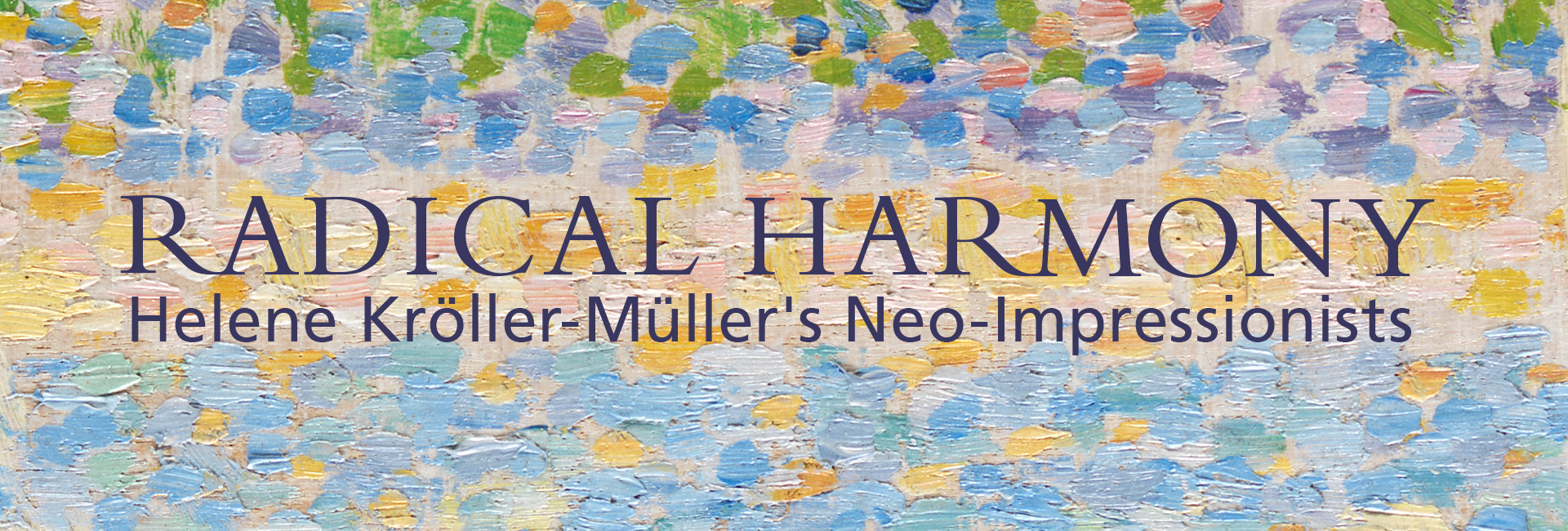When critics first saw Georges Seurat’s new style of painting, they thought it might bring about the death of painting itself. But what was it about artists like Paul Signac, Anna Boch, Jan Toorop and Henri-Edmond Cross, that ruffled so many feathers?
Neo-Impressionists painted in small dots of pure colour. Viewed from a distance, the colours blend to create nuanced tones and an illusion of light. Now known as pointillism, this technique simplified form and played with colour in an entirely new way, verging on the edge of abstraction.
Alongside this exciting approach to colour, their style went hand-in-hand with radical political ideas. They captured late 19th-century European society through luminous landscapes, portraits and interior scenes, while also depicting the struggles faced by the working class, in reaction against the industrial age.
Most of the paintings we’re exhibiting were collected by Helene Kröller-Müller, one of the first great women art patrons of the 20th century. She assembled the most comprehensive ensemble of Neo-Impressionist paintings in the world. Collected with the aim of being publicly accessible, these works now form part of the Kröller-Müller Museum in the Netherlands, which Helene Kröller-Muller founded.
See these radical visions of pure colour for yourself in Radical Harmony: Helene Kröller-Müller’s Neo-Impressionists.
This exhibition is a collaboration between the National Gallery and the Kröller-Müller Museum, Otterlo


